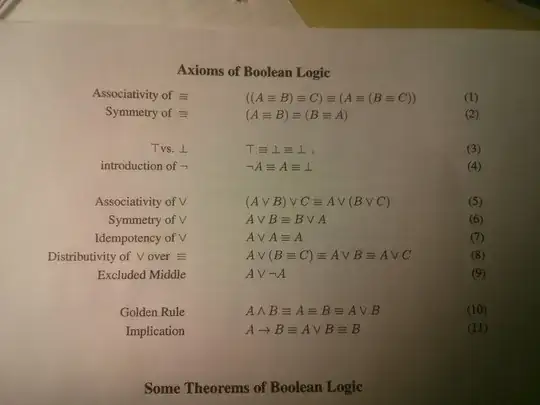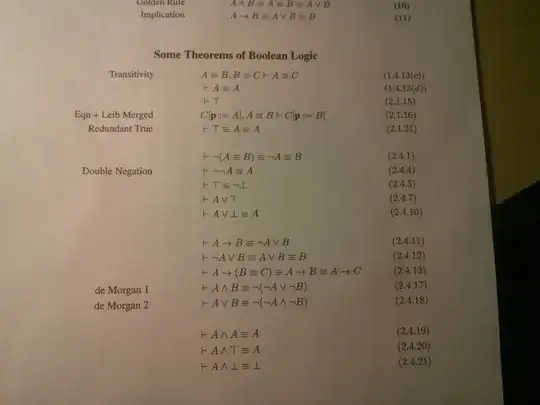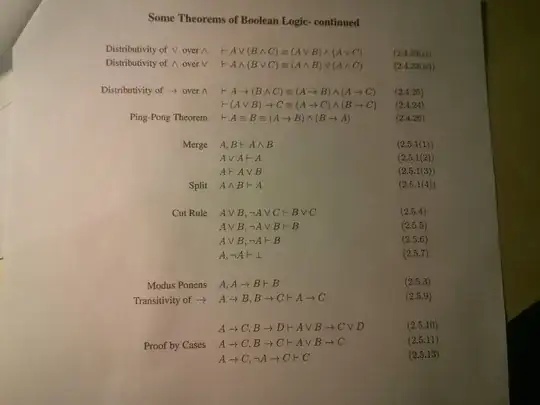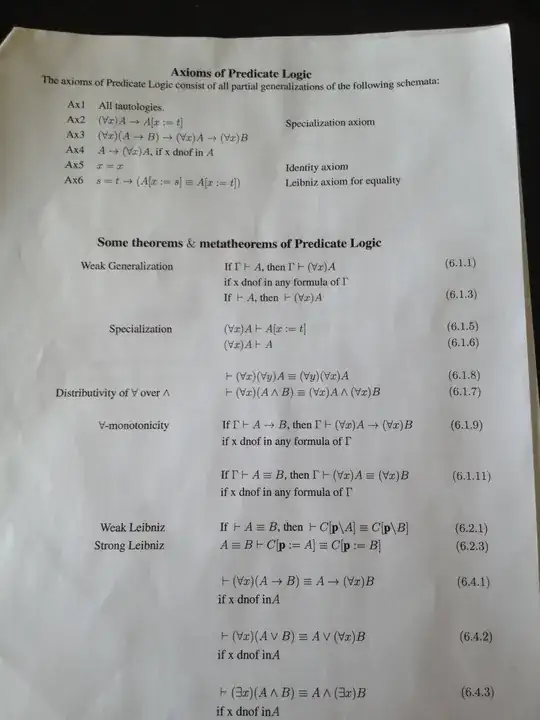It is all to horrible, dare your lecturer to prove it himself.
Equational proofs are more complex than Hilbert style (modus ponens only proofs)
Hilbert style (modus ponens only proofs) are more complex than the normal natural deduction proofs.
And in Natural deduction the proof goes as follows:
I presume that there is no x free in B and for sanity's sake I will use Ax to indicate that A can contain x.
At is just shorthand for A(x:=t) , Au for A(x:=u),
Vx stands for $\forall x$ and Ex for $\exists x$
1. | |______ (Vx)(Ax -> B) Assumption for conditional proof
2. | | |____ (Ex)AX Assumption for conditional proof
3. | | | |_t At Assumption for existentional elimination proof
4. | | | | At -> B 1 Universal elimination
5. | | | | B 3,4 modus ponens
.. | | | <------------------------------------------ end of sub proof
6. | | | B 2,3-5 existentional elimination
.. | | <------------------------------------------- end of sub proof
7. | | ((Ex)AX) -> B 2-6 conditional proof
.. | <---------------------------------------------- end of sub proof
8. | ((Vx)(Ax -> B)) -> ((Ex)AX) -> B ) 1-7 conditional proof
9. | |______ ((Ex)AX) -> B ) Assumption for conditional proof
10 | | |___u variable for universal introduction
11 | | | |__ Au Assumption conditional proof
12 | | | | (Ex)AX 11 existentional introduction
13 | | | | B 9,11 modus ponens
.. | | | <------------------------------------------ end of sub proof
14 | | | At -> B 11-13 conditional proof
.. | | <-------------------------------------------- end of sub proof
15 | | (Vx)(Ax -> B) 10-14 Universal introduction
.. | <---------------------------------------------- end of sub proof
16 | ((Ex)AX) -> B ) -> ((Vx)(Ax -> B)) 9-15 conditional proof
17 | ((Vx)(Ax -> B)) <-> ((Ex)AX) -> B ) 8,16 Equivalence introduction
But this is an natural deduction proof.
And you are asked to transform it in an equational proof?
I could tell you to first transform the proof above into an Hilbert style (modus ponens only) proof
and then transform that in an equational proof.
but that would even be to hard for me
so to be honnest I don't give you a 5% chance to succeed.
Just dare your lecturer to do it.
If he manages it, publish the proof here, (then I can also learn from it)
and if he fails, (what I would not find improbable) he should never have asked you.
All the best.




